Our Team

Jay Ingram
Focus in Design Thinking
I am a fourth-year materials engineering major interested in education and aerospace. My passion for education started by working at the Engineering Possibilities in College (EPIC) summer camp where I was able to teach and inspire middle and high school students. I also interned at Aerojet Rocketdyne where I learned about welding and additive manufacturing and pursued my excitement about human spaceflight. In my free time I play saxophone in the Mustang Marching Band and enjoy going to football, basketball, and volleyball games.

Phillip Gunadi
Focus in Student Motivation
I am a materials engineering major in my fourth-year with an enthusiasm for education and failure analysis. My interest in education began after coaching a FIRST Robotics Competition team and fostering enthusiasm for engineering. I interned at Boeing and gained experience with Finite Element Analysis; and Spectrum Inspection where I used Ultrasonic Phased Array nondestructive testing in refineries across California. I love to snowboard, rock climb and hike at Bishops Peak, and play video games in my free time.
Acknowledgements
We would like to first thank our senior project advisor, Dr. Nicole Johnson-Glauch. Her support and guidance was paramount to the success of this project.
We also want to thank Dr. Mohsen Kivy for graciously offering time in his class to run our project.
Finally, thank you to the amazing MATE students that participated in our research.
Our Project's Digital Poster
Project Goals
First year engineering students at Cal Poly start with introductory “100 level” classes to teach non-technical topics like design, project management, and teamwork for aspiring engineers. Our project is tasked with creating curriculum for Introduction to Materials Engineering Design II (MATE 120), with the following goals:
-Foster student motivation and interest
-Teach design thinking skills
-Integrate the “Learn by Doing” philosophy
-Document curriculum for reuse every year
Curriculum Design
day 1: lecture
Students were taught the basics of materials selection to give them a tool for solving materials engineering design problems. Our lecture focused on the following materials selection concepts:
-Analyzing a project brief
-Identifying materials properties
-Comparing material alternatives
Example Problem: Crane Cable

Design a new crane cable for an offshore oil platform. The oil company would like to show consumers they care about the environment but also minimize cost. The cable will be lifting objects up to 5 tons and is 200m long. Determine what material properties are important in this design.
- Core Function:
- Support a load in tension → tensile strength
- Objectives:
- low cost → price per pound
- low environmental impact → CO2 produced per pound
- Constraints:
- Must support five tons → tensile strength requirement
- Must not corrode too much → saltwater corrosion resistance
- Must not stretch too much → stiffness
DAY 2: DESIGN PROJECT
Students were tasked with designing a mock-up of a puncture resistant shoe insole using common materials such as paper, tape and fabric. Students cut out and layered together small sheets of these materials and were able to test them on the puncture tester shown below. At least three prototypes per group were required.
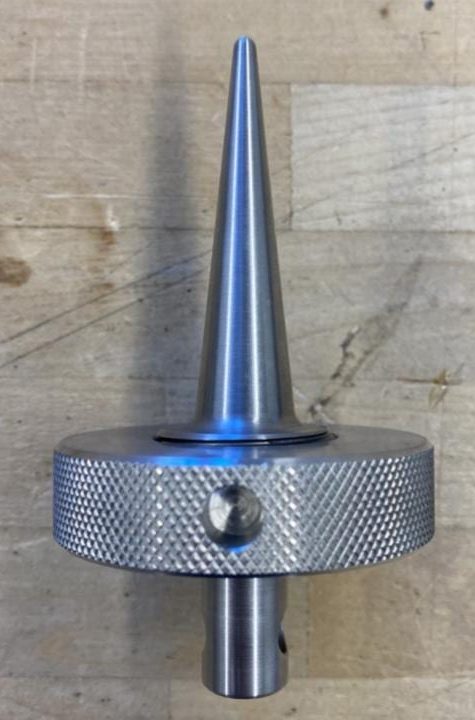
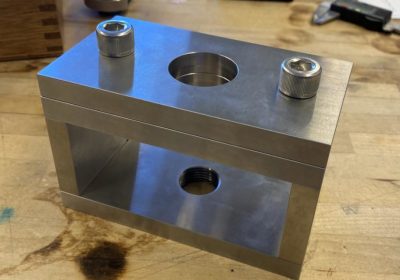
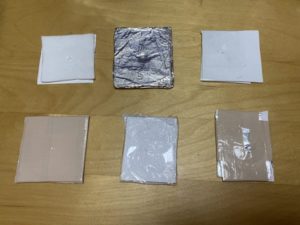
Design Project Considerations
-Designs must meet set requirements (strength, thickness, etc) while minimize objectives (cost, environmental impact)
-The entire design time was unstructured to give students the freedom to solve the problem their own way
-The instructors were actively engaged with student groups to support struggling students and further engage advanced students
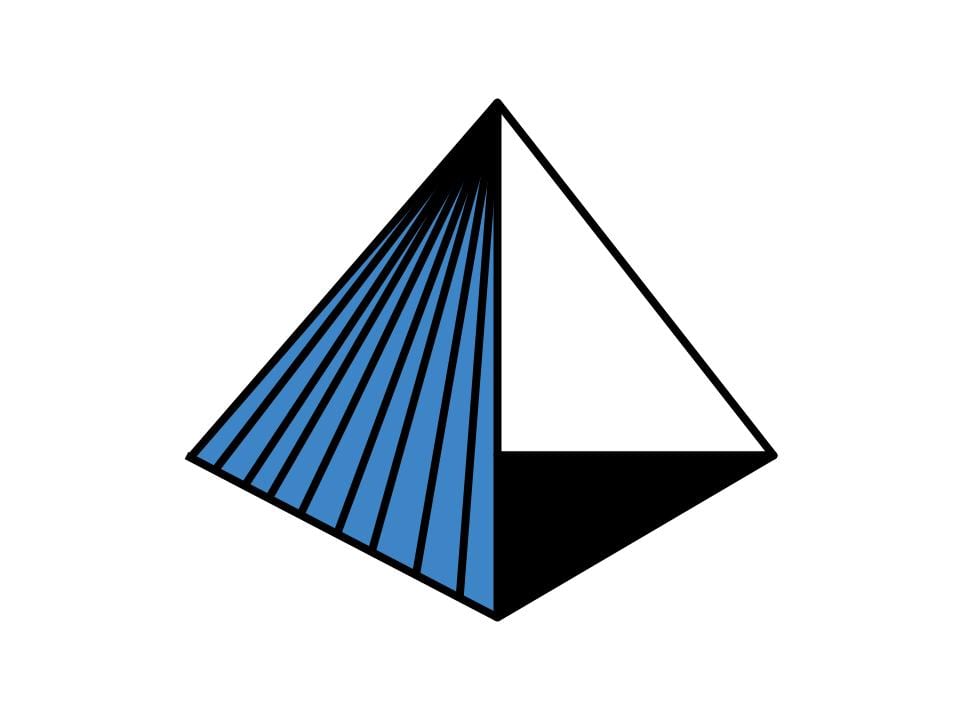
This project is sponsored by the Cal Poly Materials Engineering Department
Effect on Student Motivation
An eleven section survey on interest and motivation was given to students before and after the design project to assess the affect of our design project on student interest and motivation. Each section contained 1-4 questions on a 1-5 strongly disagree to strongly agree scale.
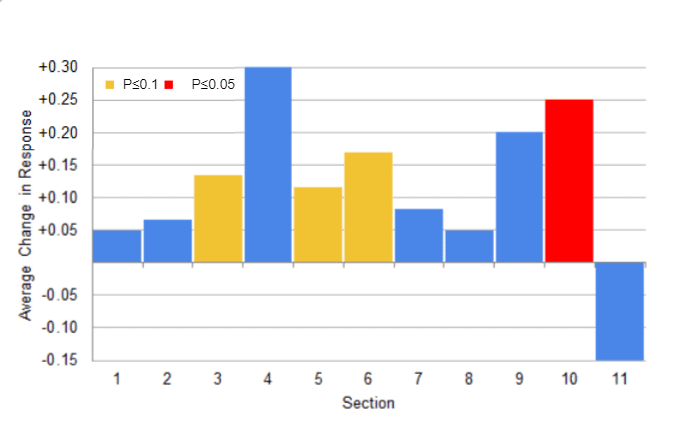
- 1. Standards
- 2. Values
- 3. Goals
- 4. Effort
- 5. Ability
- 6. Interest
- 7. Learning from others
- 8. Responsibility for Learning
- 9. Extrinsic Motivators
- 10. Intrinsic Motivators
- 11.Social Motivators
The sections that had p-values of 0.1 or less are underlined above and are Goals, Ability, and Interest and intrinsic motivators.
Responses Show Project was Challenging but Solvable
Expectancy Value theory of motivation mentions how a balance between student confidence and the challenge of any task can motivate a student These two questions reflect how the students perceived that balance in our design project.
- 21. I try to achieve academically because I like the challenges it brings
- 22. After finishing each module I felt pretty confident
- p-value: 0.096
Average change in response: +0.25 - p-value:0.10
- Average Change in response: +0.20
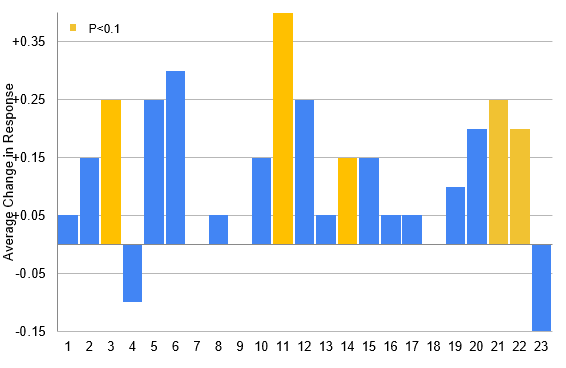
Students Proactively Set goals to approach difficulties
Goal Setting can be a metric of expectancy value theory measuring achievement motivation. Students identifying with an increase in trying different strategies suggests that students are breaking down the design project into specific achievement goals. This implies that our design project sufficiently encourages students to value the problem solving steps they take to solve the design project.
- 3. I try different strategies to achieve my academic goals when I have difficulties
- p-value: 0.096
Average change in response: +0.25
Students gained interest in the project curriculum
These two survey questions below that suggested changes in interest. The second question had a notably low p-value of 0.042 indicating a low chance that the change in data was random. While we designed the project to foster interest in MATE topics, when compared to previous labs in 120, our lab encouraged design thinking ideas that were not exclusively Materials focused. This may have resulted in students identifying these ideas as “outside of their degree area” which can explain change in this response.
- 11. I read widely on a number of academic topics outside of my degree area
- 14. I enjoy this course very much
- p-value: 0.042
Average change in response: +0.40 - p-value: 0.083
Average change in response: +0.15
Design Thinking Engagement
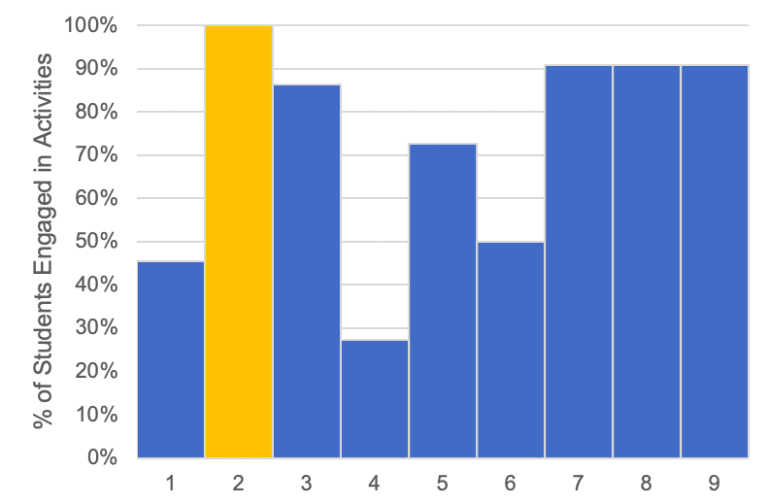
- 1. Studying the Brief
- 2. Planning the Process
- 3. Collecting Information
- 4. Looking for Examples
- 5. Consulting with Others
- 6. Sketching Solutions
- 7. Comparing Alternatives
- 8. Evaluating Prototypes
- 9. Preparing Final Design
Students filled out a post-design self-reflection survey and indicated which of the above design activities they engaged in. The most interesting result is 100% engagement in planning the process (underlined above) . In similar length design projects, other studies found it difficult to engage students with this activity, but our project was uniquely successful in encouraging it.
Design Thinking Approaches
Students also self-reported the order in which they participated in design activities. From this data, we propose differentiating design thinkers as “planners” or “doers”
Planners
Develop workable solutions then validate designs with prototypes
Often only slight changes are necessary between prototypes
Favor early knowledge gaining activities (3, 4, 5)
Doers
Test initial assumptions with early and rough prototypes
Often go “back to the drawing board” after the initial prototype
Favor early testing activities (7, 8, 9)
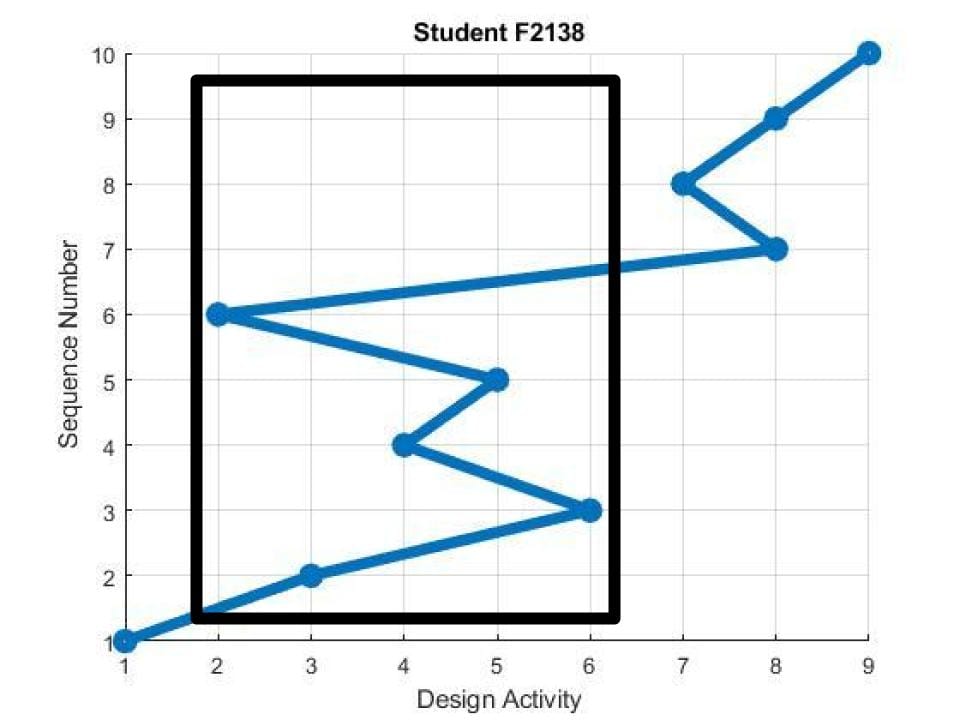
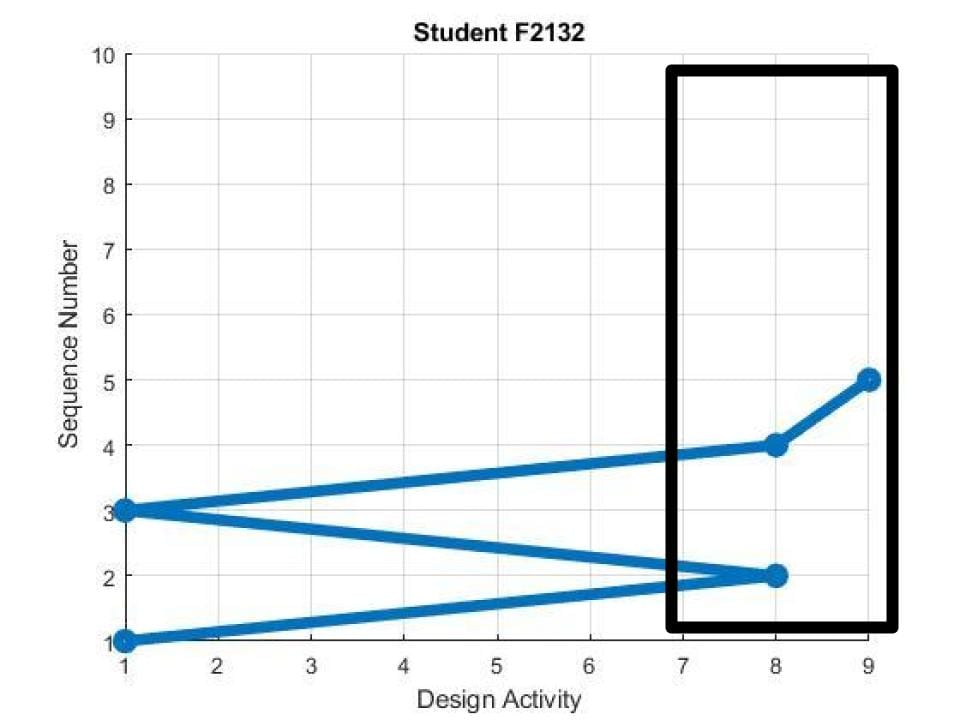
Figure 6. Self-reported design thinking sequences of an example planner (left) and doer (right)
Two example students’ responses can be graphed into sequences to show the design pathway they took. The boxed region identifies the category of activities that doers and planners favor early in their process.
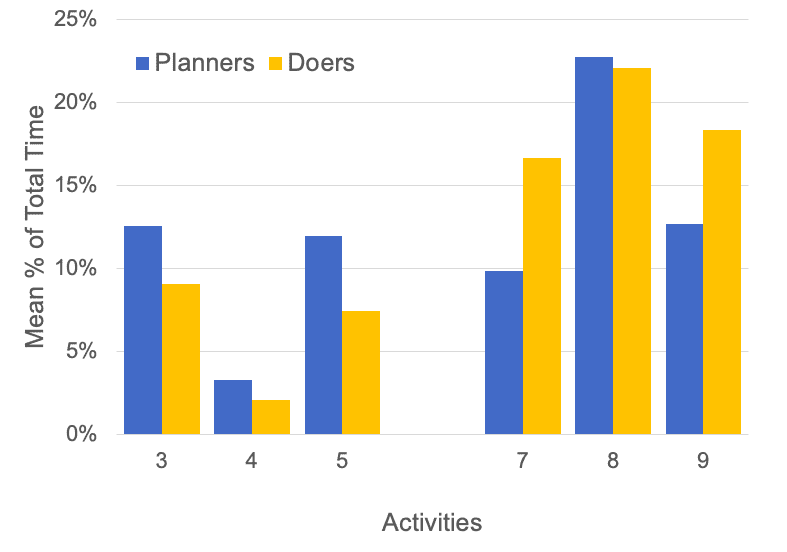
Students also self-reported the time they spent on each design activity and is graphed above as the mean percent of each student’s total time. Planners on average spend more of their time on knowledge gaining activities (3, 4, 5) and Doers on average spend more of their time on testing activities (7, 8, 9).
Conclusions
Students approached design thinking as planners or as doers
The project encouraged students to plan their design process
The project shows some success in increasing student interest in the course
Further Research Questions
Is there a consistent and quantitative way to categorize planners and doers?
Are experienced design thinkers more likely to be planners or doers?
Would a large sample size or longer monitoring time show different or similar changes in student motivation?

